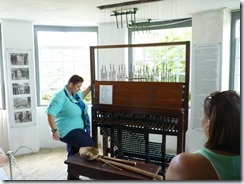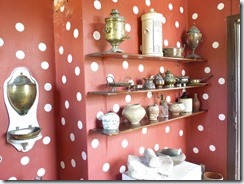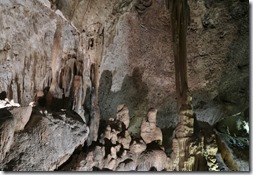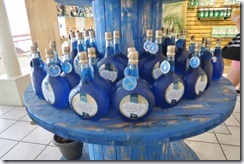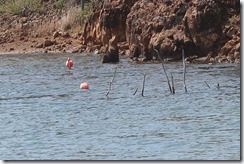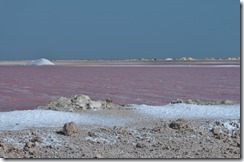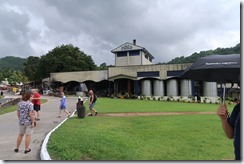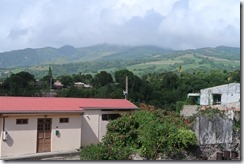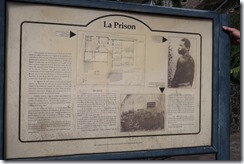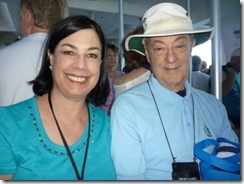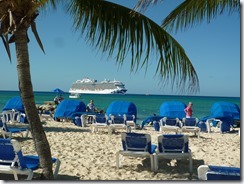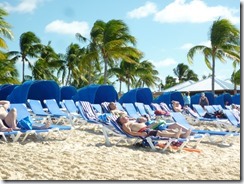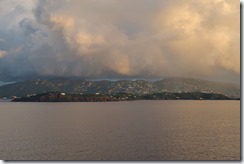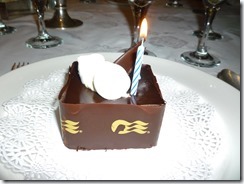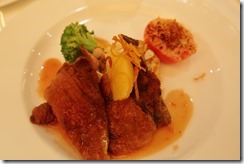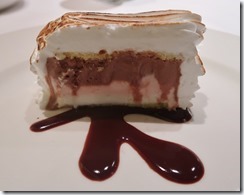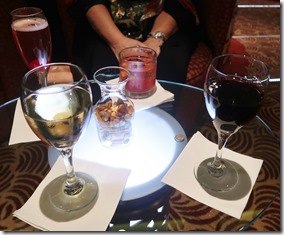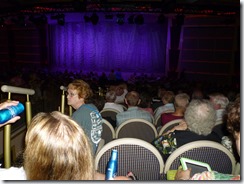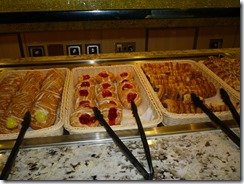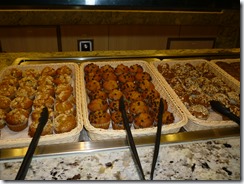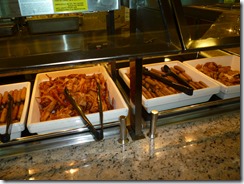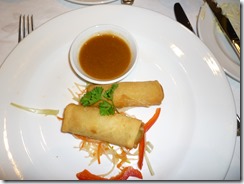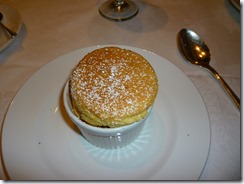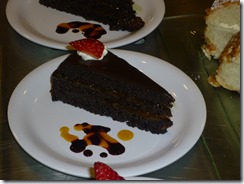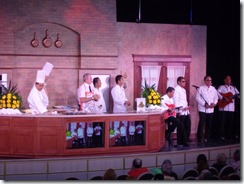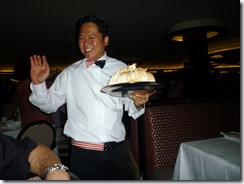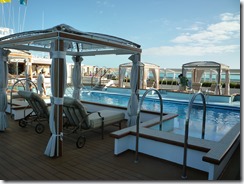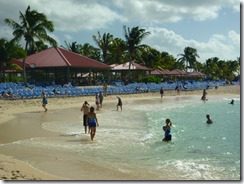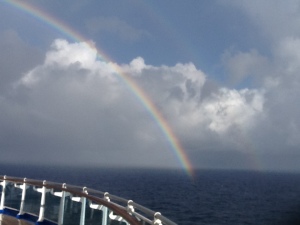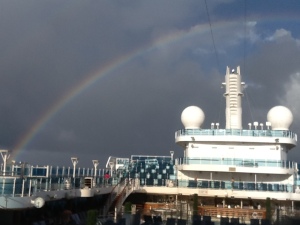We took Shore Excursion CUR – 100 from the Royal Princess in Curaçao. Beautiful aqua water greeted us at the pier. On land, we met dry terrain with cactus, a civilized city with houses that looked like places in Florida, columned municipal buildings, a cathedral, and a swing bridge into town.
From the pier, you could walk to the right toward the Renaissance Hotel and follow the signs to cross the bridge into town. It’s a twenty minute walk, but it will seem much longer if you are carrying heavy packages. If I heard our tour guide correctly, the main industries are oil refining, salt, tourism, and producing Curaçao liqueur.
Our drive took us first to the Curaçao Museum in a colonial-style building dating back to the 1800s. The rooms held paintings and antique furniture with windows wide open and no air-conditioning. An airplane cockpit rests in a secured outbuilding. The shady grounds are pleasant to stroll while waiting to get back on the tour bus.
Next we toured Hato Caves, an above-ground cave. We had to climb a steep set of 49 steps to get there. Once inside, you had to duck and hold onto a hand rail to reach the various caverns. The usual views of stalactites, stalagmites, and calcite columns are present. Total blackness yawns from areas that are unlit, while bats hover overhead.
Outside, we caught an iguana on the grounds. A snack bar and restrooms are available. The natives like iguana stew, the “poor-man’s chicken.”
We visited the Chobolobo factory where they make the famous branded Curaçao Liqueur. It’s said the soil of the island changed the sweet Valencia orange brought by the Spaniards into a bitter fruit. But the peel contained an oil with a pleasing fragrance. The famous Blue liqueur comes from the peel of this fruit.
Inside a building, the distilling process is explained in a museum-like setting. Their famous liqueur comes in an orange-shaped bottle. If it’s in another container, the product isn’t theirs. It comes in classic original orange flavor plus chocolate, coffee, rum raisin, and tamarind. An enticing gift shop offers a wide selection of liqueurs and other souvenirs.
We crossed the Queen Juliana Bridge with vistas of the port city on our way back to the ship. At the port were a decent number of native huts selling souvenirs, hats, Curaçao liqueur, magnets, spoon rests, dresses and shirts, and Delft figurines. Waves crash onto the rocky breakfront by the pier where you can also enjoy tropical drinks at a bar.
Our tour was well worthwhile, although we did not make a photo stop at the salt flats as listed in the tour description. Nonetheless, we need to make a return visit to go into Willemstad and roam the city streets. A brief glimpse wasn’t enough.
This concludes my review of our Royal Princess cruise and the ports of call. I hope you’ve enjoyed my descriptions. Happy Sailing to you in the New Year!













